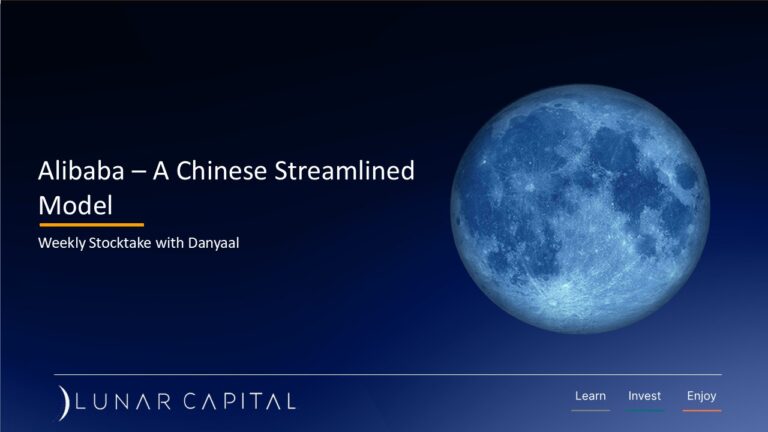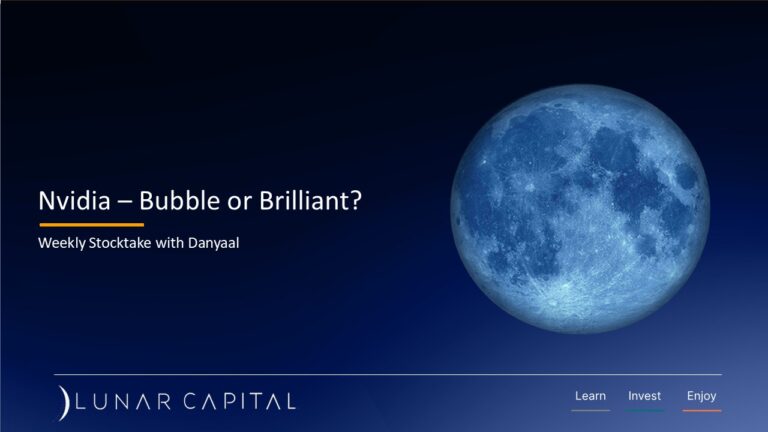Read to Learn
“If I have seen further, it is by standing on the shoulders of giants”
This quotation is attributed to Sir Isaac Newton. Newton was making the point that had he not learnt from other great scientists, he would not have been able achieve what he did.
In the investment world, there are a number of great investors who are eager to share their investment philosophies and strategies. This is a great source of learning. The internet also has an abundance of people (and maybe some bots) sharing their ideas and views. However, I have found that books written by the masters have provided the deepest learnings, especially when one tries to practically implement those learnings. To be able to write a book well, one must be able to think through the subject matter deeply and be able to communicate this so that the readers are able to understand the complex analysis and messages that one is trying to convey. Hence, in my opinion books provide the best means from which to learn complex subjects.
In this blog, I’ll briefly discuss five books that have had a major impact on my investment philosophy, strategy and approach. This is by no means the best five books but merely those that I can trace back from our current investment philosophy and approach. There are many other books from which we have learnt and these learnings are perhaps more implicitly used in our investment philosophy and approach.
Benjamin Graham – The Intelligent Investor
One of the highlights of most investor’s year is Warren Buffett’s annual shareholder’s letter to Berkshire Hathaway’s shareholders. In many of these letters as well as in interviews, he has recommended reading Benjamin Graham’s The Intelligent Investor. Buffett calls it the best book on investments ever written.
This book is full of practical advice on investing, valuing companies, managing risk; broadly providing a framework that anyone can apply in their investment journey. The advice that Graham provides, if applied correctly can significantly reduce the emotional aspects of investing. In other words, he provides one with quantitative tools that you can use to make investment decisions and reduce the impact of emotions in these decisions.
One of the tools that we use in our investment approach is a set of quantitative and qualitative valuation criteria that we directly applied from The Intelligent Investor. Over time, we have added to this valuation criteria, but the core aspects of deciding how to determine the value in a given business comes from our learnings from this seminal work.
Perhaps the best take-out from this book is that it allows you to think independently about the market and whether a share is over- or under-priced. This is particularly important when one considers that the market and particular stocks too, can be significantly over- or under-valued at any point in time. If one has the emotional discipline to apply Graham’s advice in your investment decisions, there is a very good chance that you will outperform the market over time.
Graham is considered as the godfather of value investing and the father of security analysis.
Alice Schroeder – The Snowball
The Snowball is sub-titled “Warren Buffett and the Business of Life” written by Alice Schroeder on the life of Warren Buffett. This book would be as close to a book written by Buffett himself on his life if he had done so (He has decided not to write his autobiography).
It traces his life both personally as well as professionally and provides an incredible insight into his wisdom, frugality and quirkiness.
Some of Buffett’s quirkiness are his love for drinking cherry flavoured coke and eating burgers, replacing his car with a used vehicle, because he hates paying a full price and living in the same house for the most part of his adult life. His simple philosophy is that if he saves a dollar today, it will be a thousand dollars one day in the future. Isn’t there a wonderful lesson on what we can do to save a little today so that we can invest to get more in the future?
The book also shows his deep respect for Benjamin Graham and how Buffett adopted Graham’s teachings into his own investment style. Importantly, it also shows how Buffett “stood on Graham’s” shoulders by adapting his own investment philosophy. Graham espoused the idea of buying cheap stocks, i.e. stocks that are priced cheaper than its intrinsic value. Whilst this is still a core component of Buffett’s approach, it is his learning from his long-time partner and friend Charlie Munger that Buffett adapted his style to not only focussing on a cheap price but also on the quality of the business.
The argument that if you can get a quality business at a cheap price (even maybe not so cheap, but at least cheaper than its intrinsic value), then you are into superior investment performance. It certainly shows in Berkshire Hathaway’s performance over the very long term.
One of the other profound learnings from The Snowball for me was that Buffett only invests in businesses that he understands. During the dotcom boom of the late nineties and early noughties, Buffett famously did not invest in any IT businesses. For a while, Berkshire Hathaway underperformed the market, but this was quickly reversed subsequently. The pressure to invest in the latest craze and the “next big thing” will always be there. If you do not understand these crazes, then it is better not to invest in them.
The book also covers Buffett’s philanthropy and his approach to how he will donate his fortune. It covers how he and Bill Gates, the founder of Microsoft have become friends, and how Buffett has pledged most of his fortune to the Bill & Melinda Gates Foundation, a philanthropic organisation trying to solve some of the world’s greatest problems, including for example finding a vaccine or cure for malaria, one of Africa’s greatest killers.
Howard Marks – The Most Important Thing
Howard Marks is the Chairman and founder of Oaktree Capital Management. His investor memos are also legendary and always provide great insight and very deep thinking. He used the material from some of his memos to compile The Most Important Thing.
He starts of by saying that it was his discussion with Charlie Munger (Buffett’s partner) that led him to conclude that investing is not easy. Sarcastically, he in fact lists twenty issues that are the most important thing when it comes to investing: from second level thinking (i.e. not simple cause and effect thinking), to understanding market in/efficiencies, value, understanding risk, controlling risk, being attentive to cycles, appreciating the role of luck, etc.
Marks is no doubt a deep thinker and a very experienced and successful investor. Arguably, he can be considered as a contrarian investor. In this book, he provided a checklist to gauge whether it is a good time to invest or not. It is not surprising that the best investment opportunities are more likely to come during economic downturns and when the mood is really grim. This is when most investors are in fact staying out of the market.
We have adapted this checklist to gauge the mood in the market. We use this as an additional input in deciding how aggressive or defensive we will be. As an aside: Our assessment using this tool, is that the market is lukewarm at the moment, i.e. neither a great nor a terrible time to be investing. So, we approach the market with an element of caution. Another section that we found useful is understanding and controlling risk, and in particular the dangers of betting on a single outcome. We often mistake risk as volatility, or we look back and say that a particular event caused the risk to be realised. But risk is in fact a range of scenarios that can possibly play out, some scenarios beneficial, and some costly. At the outset, it is hard to assess the exact scenario that will play out.
The Most Important Thing highlights the difficulty in investing. There are many moving parts, many risks, and many hidden factors influencing the markets. It is a continuously surprising and learning experience.
Peter Lynch – One up on Wall Street
One Up on Wall Street was written by Peter Lynch who managed the Magellan Fund at Fidelity from 1977 to 1990. The Magellan Fund was the best performing fund over that period. This book, written in 1989, shares some of Lynch’s insights and investment techniques. It is written with a view that the person in the street has a better chance of outperforming the market than Wall Street (i.e. the professionals).
How can the layperson beat Wall Street, especially after we heard Marks’s view that investing is not easy? The layperson, has a better chance of spotting emerging trends that can lead to great investment decisions, than the professionals. An emerging company will be too small for professional investors and will not even make their radar initially. In all likelihood, this is when this emerging company is not over-priced and can likely result in a ten-bagger (i.e. an investment that yields ten times its original investment).
These trends are often observed in the consumer sectors, notice a trendy product, chain store or franchise that everyone is raving about. Are they listed? Is the new store or product part of a listed company? How big is that store or product of the listed company? If it is significant, then maybe you have spotted a potential ten-bagger.
Lynch also identifies different types of investment opportunities: is it a stalwart, i.e. a profitable but slow growing company; is it a fast grower; is it a turnaround; is it an asset play; is it a cyclical business? We find this a very helpful way of providing a clear reason for why we may be investing in a particular business.
I also found the section of when to sell a share very helpful. Warren Buffett is famously a collector of businesses, i.e. he likes to invest in businesses forever. However, I found Lynch’s indicators of when to sell a share as particularly insightful and pointed. Has inventory levels being building up? Is the business requiring more and more cash to stay competitive.
Even though this book was written in 1989, it is as helpful today as when it was written, to both the professional and more so the individual investor.
Martin Ford – The Rise of the Robots
Finally, Martin Ford’s analysis of technology trends and its impact on jobs in The Rise of the Robots is a scary book. It shows the decimation of jobs as a result of automation and the reducing share of income of the average working person over the last twenty-odd years. I wrote about this in a previous blog: Making sense.
He paints a picture that if we see this trend of job decimation and lower or stagnant wages continuing, then we will not have a market for the goods that we produce. The general public will not be able to afford the goods that are produced – i.e. demand will die. Arguably, the rise in populism is a reflection of this trend, people are unable to afford what they believe that they should be able to afford.
Ford also argues that with Artificial Intelligence, even good jobs like office workers, programmers, journalists, paralegals will be taken over by computers (robots). This book makes one think very poignantly about the future. What economic prospects will we have? Will inequality continue to widen? Will this result in social upheaval? What policy responses could we have to be able to either counter this trend or be able to better cope with these trends?
Whilst this book is not directly about investing, it does provide one provide a glimpse of what the future may look like, which industries may benefit and where the risks may lie. As citizens, the book provides a better insight to the problems that we are facing and allows us to engage with leaders and policy makers more meaningfully. It also allows us to take individual actions so that we can learn new skills and build up reserves to cope in this rapidly changing world.
* * * * *
Read to Learn
In summary then, by reading we can learn from the masters and avoid the pitfalls that they encountered. We can share in their wisdom and put this into our practice. Books are by far the best way to learn quickly, but it is only through practice that one will know how well you have learnt.





